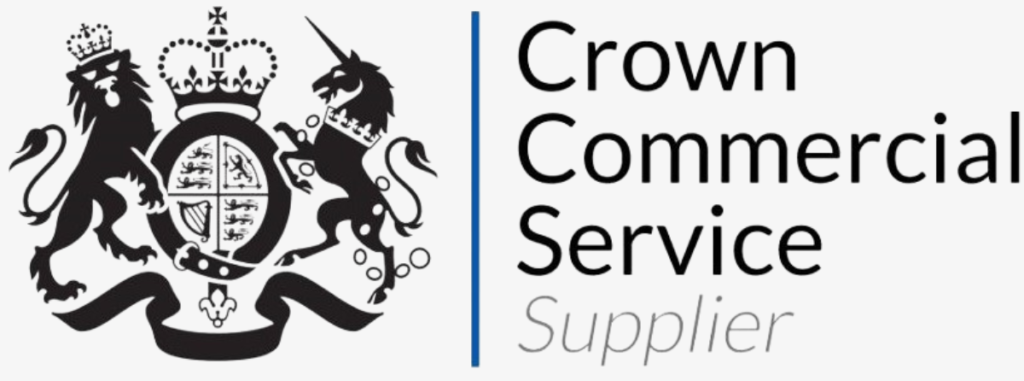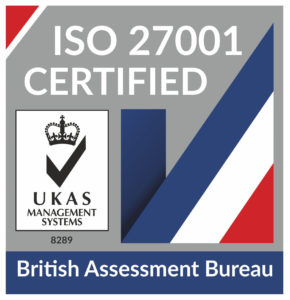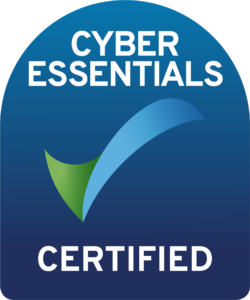
HaloITSM Guides
Documentation to assist with the setup and configuration of the HaloITSM platform
Integrating with Sage
Installation of Sage Interface files
To use Sage integration, third party integration needs to be enabled within Sage.
To do this, please contact Sage and ask them for the activation key to release this (should be already included in your purchase, so free of charge).
Sage Company File
1. Sage uses a file called the COMPANY file to define the folder where the actual Sage data is stored. NetHelpDesk needs to be told where this COMPANY file is located, so it knows where to source the Sage data to sync with NetHelpDesk.
2. If the correct path name to the COMPANY file is not entered, Sage errors with messages such as "incorrect data version", or a blank Sage company selection screen will display.
PLEASE NOTE: The path specified in NetHelpDesk needs to be to the FOLDER where the COMPANY file is stored, and not to the COMPANY file itself.
Correct example: …\Program Files\Sage\Accounts
Incorrect example #1: …\Program Files\Sage\Accounts\COMPANY
Incorrect example #2: …\Program Files\Sage\Accounts\Company.000
3. Below is a screenshot of Sage 2013 installation in Windows Explorer showing the location of the company file.
NetHelpDesk can be used to create sales invoices in Sage for:
- Services (e.g. Time entered onto a ticket by a Technician)
- Items (e.g. Any chargeable goods/units, such as hardware or software)
- Recurring Billable Items (e.g. antivirus renewals, domain name hosting etc.)
- Fixed Price Contracts (e.g. Your Customer pays a fixed amount for service you provide)
If you would like to get NetHelpDesk to produce an invoice directly in Sage, you must install the Intuit foundation class libraries.
Once you understand these simple steps, you can move forward into more advanced features of the integration.
Sage Data Sync/Import Wizard
(for Customers who wish to import data from Sage into an empty database)
If you have details in Sage that you would like to import into a blank database used by NetHelpDesk, you can use the Data Sync/Import Wizard.
The following data from Sage can be imported:
Customer Name, Customer Addresses, Customer Telephone Number, Customer Domain Name (for incoming e-mail matching). Customer Accounts ID, Service Items, Non-Service Items.
PLEASE NOTE: This process can be used for the initial data import, as well as an on-going synchronisation. This part of the integration is Read Only, and will only read the data from Sage and import into NetHelpDesk. It doesn’t write any of the above data back into Sage at any time.
To carry out an import/sync:
1. Make sure you have Sage open and running on the same PC as NetHelpDesk.
2. Go to Options > Setup > Billing Tab.
3. Check Use Sage for Invoice Processing checkbox
4. Add the Path to Sage Company File.
5. Add Sage User Name and Password.
6. Add Sage Version Number (12 – 17 only)
7. Click Sync Customers/Items from 3rd Party Accounts button.
8. NetHelpDesk will ask if OK to import Customers and Items from QuickBooks / Sage. Click Yes.
9. Sage will ask for what permissions to give NetHelpDesk to access the Sage data. Select as necessary.
10. The number of items processed from the Items List in Sage will display.
11. NetHelpDesk will ask you Would you like to set Customer address details in NetHelpDesk to the address details in Sage. Select as necessary.
12. The number of customers processed from Sage will display.
13. NetHelpDesk will ask you When adding actions in NetHelpDesk, do you need to be able to select a Sage Service item for the time to be billed against? Select as necessary.
14. The number of Service items processed from Sage.
15. In the following steps, if you do not intend to use these charge rate codes, select an Accounts ID you know has a zero rate.
16. NetHelpDesk will now ask you to Choose Item to use for Periodic/Contract Charge. Select as necessary.
17. NetHelpDesk will now ask you to Select Accounts ID for the charge rate code: Remote Support.
18. NetHelpDesk will now ask you to Select Accounts ID for the charge rate code: On-Site Support.
19. NetHelpDesk will now ask you to Select Accounts ID for the charge rate code: Remote Support.
20. NetHelpDesk will now ask you to Select Accounts ID for the charge rate code: Travel.
21. NetHelpDesk will now ask you to Select Accounts ID for the charge rate code: Mileage.
22. Import is now complete. However, please read to the end of the section.
PLEASE NOTE: In the unlikely event you encounter any errors, or screens do not appear as you expect, please contact out support team. There is a high probability it will take just minutes to fix.
23. Make sure on the Billing tab, in the Tax Codes section, make sure the last column QB Tax Code match the codes in Sage Sales Tax Code List. If not, manually edit these.
24. Click OK.
25. If your Customer list does not display straight away, you may not have a main screen refresh set. Change the current view to another filter selection, and then back to By Client/Site.
PLEASE NOTE: If there is an e-mail address against the Customer, the domain name is now mapped across to the site incoming domain field (used for matching unknown users from that company.
Understanding How NetHelpDesk Invoices in Sage
In the following example, there are 2 ways to display the information we enter in a Sage Invoice:
a) Grouping Ticket Actions by Charge Rate, or
b) Creating an Invoice Item per action.
By default, NetHelpDesk groups Ticket Actions together by Charge Rate.
i.e. If you have 10 actions against a ticket, and you only have 5 charge rates specified, e.g. On Site Support, Remote Support, Travel, Mileage and Miscellaneous, the most lines you will have in your Sage invoice against a ticket is 5 (one for each charge rate used). If you only used 3 charge rates in the ticket, the most you will have are 3 lines in your Sage invoice, and so on.
To create an Invoice Line item per action, go to Options > Setup > Billing Tab > Advanced Features Section and select the Create Invoice Line Items per action checkbox. Click OK.
Creating Invoices from NetHelpDesk in Sage
Now that you have your Customer and Item details in NetHelpDesk, let’s produce a sample invoice with some actions with time, and some items issued, so you can see information from a NetHelpDesk ticket being injected in a Sage invoice.
Creating a Sample Ticket to Invoice
1. Choose a Customer, and create a New Request in NetHelpDesk against one of the users. e.g. Right click on a User’s Name, and select New Request.
2. Make a note of the Customer you have used, as this will be needed later.
3. Add a Summary for the call, and some brief Details, and click Add Request.
4. Add some actions, maybe 2 or 3, against the ticket, and associate a different charge rate for each one.
5. Add a few Items as well to the Items Issued tab.
6. Now Close the Ticket, add some closure Notes, and some final time.
7. The ticket will disappear from the main screen, as NetHelpDesk assumes that no further Technician action is necessary. If you need to review, use the main screen filter by clicking on the green + button in the top right hand corner of the main screen.
8. Now that a ticket has been created, you will want to see what NetHelpDesk does with the data. So, now we run a standard Billing and Invoice Routine.
Standard Billing and Invoicing Routine
PLEASE NOTE: This routine injects information straight away into Sage. Select a “Trial Run” if you want to test everything is ok first, which will not update Sage.
1. Click Reports in the main screen.
2. Under Invoicing Reports and Accounting Process, click Create Invoices and Invoicing Report.
3. Client to Invoice: Select the Customer you applied the test ticket to earlier.
4. Select Update Database and produce 3rd Party Accounts transactions checkbox.
5. Click OK.
6. NetHelpDesk will then ask if ok to continue. Click Yes.
PLEASE NOTE: Sage will need to be running for the transactions to synchronise.
7. “OK to Process: X Accounts Transactions?” Click Yes.
8. Reminder to have Sage running now in order for it to work. Click OK.
9. NetHelpDesk will then confirm the number of transactions processed successfully. Click OK.
PLEASE NOTE: If any transactions are not processed correctly for any reason, view the log file to see errors. These errors are usually regarding missing information, and easily resolved. Speak with the support team to guide you through these.
10. If all ok, you do not need to view the log file now, so click No. Your sample invoice is now in Sage.
Choosing Data to Inject from NHD Ticket into Sage Invoice
Now you have a sample invoice, and can see information from a NetHelpDesk ticket being injected into a Sage Invoice, you will notice that the default information from the ticket is the Ticket Number ($faultid) and the Closure Note ($clearance).
To add further information to display, you will need to edit the Charge Rate Descriptions.
1. Go to Options > Setup > Billing Tab > Global Charge Rates (Amounts, Descriptions and 3rd Party Accounts Item Codes) > Select a Charge Rate from the list > Edit Charge Rate Description .
2. The 3rd Party Accounts Desc: field is where the following $variables can be specified, to add content from the NetHelpDesk ticket into the line items in the Sage invoices.
3. Add some from the list below, and repeat the steps above, to get a feel for this brilliant integration feature.
String Variables for Billing in NetHelpDesk with Sage
$FaultID | Ticket Number |
$Symptom | Ticket Summary |
$Symptom2 | Ticket Details |
$Clearance | Closure Note |
$AssignedTo | Technician Assigned to Ticket |
$DateOccured | Date Ticket Logged |
$DateCleared | Date Ticket Closed |
$username | End user name |
$faultid | Request ID number |
$actionnote | Action note |
$actiontech | Technician who added note |
$actionstarttime | Time action logged in 24HR format, e.g. 14:00 |
$actionduration | hrs:mins entered against the action, e.g. 1:30 |
$actionendtime | Time action finished in 24HR format, e.g. 15:30 |
For more detailed information on how NetHelpDesk integrates with your third party accounting software, and how to utilise the powerful billing mechanism of NetHelpDesk, please see the Advanced Billing from NetHelpDesk section of this guide.
Popular Guides
- Asset Import - CSV/XLS/Spreadsheet Method
- Call Management
- Creating a New Application for API Connections
- Creating Agents and Editing Agent Details
- Departments and Teams
- Halo Integrator
- Importing Data
- Multiple New Portals with different branding for one customer [Hosted]
- NHServer Deprecation User Guide
- Organisation Basics
- Organising Teams of Agents
- Step-by-Step Configuration Walk Through






